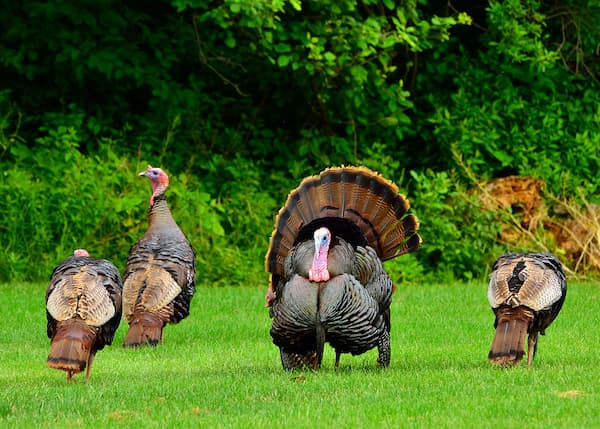
Springtime turkey hunting is an exciting challenge, and with the right tips and tricks, you can be sure to bag a gobbler.
The Basics of Turkey Hunting
Before you embark on your hunt for the elusive spring gobbler, it is important to understand the basics of turkey hunting. You’ll want to be familiar with the types of turkeys in your area and their habits. You’ll want to be familiar with your equipment and how it works so you can deploy it easily. You’ll want to scout your area and know where the turkeys are and what routine they follow. Practice your calling to lure the toms effectively. And finalize your strategy to stay out of sight while setting up the best shot possible.
Set Up Early
To give yourself the best possible chance to bag a gobbler, you need to set up early, typically before dawn. Getting there before other hunters can give you an advantage and the turkey less opportunity to detect your presence.
When you’re setting up, consider the wind direction and make sure your blind is downwind, so you don’t tip off the other wildlife in the area that might spook the turkeys. Oftentimes, turkeys follow the wind to better hear the calls of their prospective mates. If you can use the wind to carry your call, you could have a better chance of calling them into your strike zone.
Use the natural elements in your hunting area to camouflage your blind. The more naturally you blend into the vegetation, the less likely you are to be spotted by the keen turkey vision.
Get in Close
Keep your strike zone small. The gobblers will be roaming around looking for that special connection with a hen. Don’t get caught up in trying to take a shot when it’s too far out, could miss, and could chase the birds away. Wait till they’re well inside your strike zone to give you the best chance at one good shot. Once you shoot, the other birds will run off in fear and might not return. Assume you only get one shot, and take it wisely.
Use Decoys
Decoys can be a great tool to use when bowhunting for spring gobblers. They can help to draw in the birds and help them feel comfortable lingering around the clearing. When setting up your decoys, try to create a natural scene. You can put hens around a tom to make it look like a natural flock, which could draw more birds to the area. Make sure not to put the decoys in your firing line. And put them far enough away from the blind that gives you an opportunity to move inside your blind without spooking the birds with any little noise.
Be Patient
Spring turkeys are notoriously skittish. They can spook easily if you move too quickly or make too much noise. Remain still as much as possible and move slowly and quietly when you need to move. Have your bow or crossbow ready so it’s easy to deploy when the opportunity presents itself.
If it seems you aren’t getting any birds to your spot, try different calling techniques, they might respond better to other calls. Overall, give the birds time to wander around and make their way to your hunting zone. Patience is the key to success when hunting spring gobblers.

Good Morning Mr. Bow Bully,
Your photo of turkeys lured me in. There are lots of turkeys in the area and I wonder what might be the tastier bird to bag? Should I go for a tom, because they’re the biggest, or a hen, because she would be the most tender and delicious to eat? Or do they all taste about the same?
In my internet searches for tips on cooking a wild turkey, sources say that the flesh can dry out in an instant if you are less than 100% vigilant on the baking process. They say that the best way to cook a wild turkey is the French, confit method, which is to cook the cut-up turkey parts slowly in a covered pan, with extra fat and flavoring vegetables added.
Also, it this time of year the best for the tastiest meat? I have heard that the meat is better tasting when turkeys are eating more seeds than bugs. Is there any truth to this?
Thank you for thoughts to my questions.
Best regards,
Will